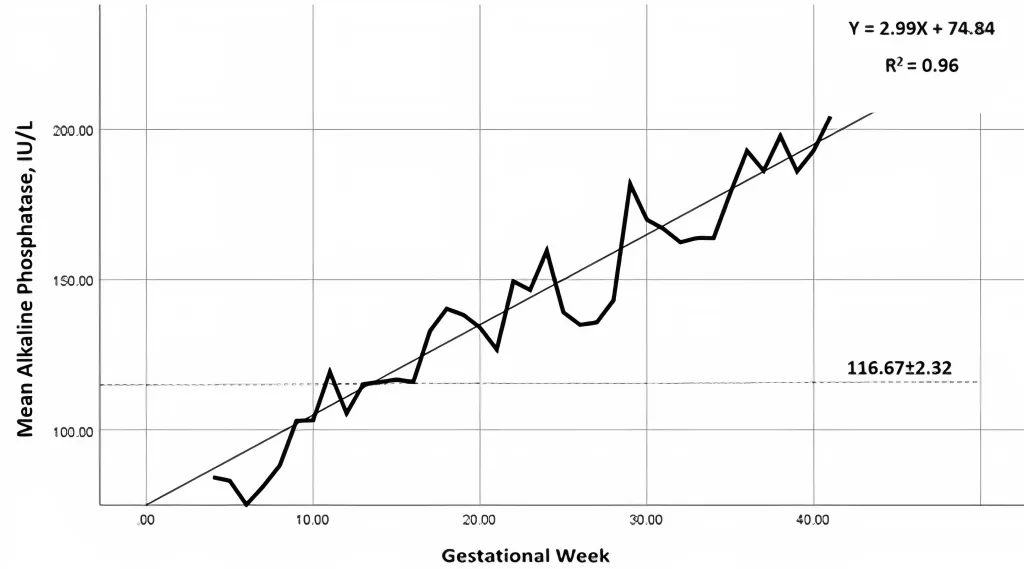
The liver, bile ducts, bones, kidneys, and intestines are only few of the tissues that contain alkaline phosphatase (ALP), which is an enzyme that may be discovered located in numerous parts of the body. Several biological processes, including bone mineralization, the operation of the bile duct, and the remodeling of cell membranes, are all significantly impacted by its active participation. The amount of ALP that is present in the blood may be determined by an ALP test, which offers vital insights on the health of these organs as well as possible diseases that lie under the surface.
Alkaline phosphatase levels within the normal range
The range of ALP values that are considered normal might change based on factors such as age, gender, and the laboratory that is doing the test. In adults, however, the usual range for ALP is between 40 and 150 IU/L (International Units per Liter). This is the normal range. The usual range when it comes to children differs based on their age and the stage of development they are currently in.
Indicators of Abnormal ALP Results What Are They?
Results that are abnormal for the ALP, whether they are greater or lower than the normal range, might be an indication of underlying health problems. When the levels of ALP are high, it may be an indication of liver illness, blockage of the bile duct, bone diseases, or certain drugs. A low ALP level may be connected with starvation, vitamin deficiencies, or certain genetic abnormalities, despite the fact that it is less prevalent.

Reasons for High Levels of Alkaline Phosphatase
Liver Disease: The release of ALP from damaged liver cells is one of the causes of high ALP levels, which may be caused by a number of liver illnesses, including hepatitis, cirrhosis, and liver cancer.
Bile Duct Obstruction: The obstruction of the bile ducts, which are the tubes that transport bile from the liver to the gallbladder and the small intestine, may result in elevated levels of alanine aminotransferase (ALP) because the enzyme becomes stuck in the liver for an extended period of time.
Bone Disorders: High levels of alkaline phosphatase (ALP) may be caused by bone abnormalities such as Paget’s disease, osteomalacia, and rickets. These conditions are characterized by accelerated bone turnover.
Certain Medications: Medications such as barbiturates and phenytoin have the potential to potentially cause an increase in ALP levels.

Reasons Why Alkaline Phosphatase Levels Are So Low
Malnutrition
The presence of low levels of ALP may be a consequence of severe malnutrition as well as a lack of protein supplies.
Vitamin Deficiencies
Insufficiencies in Vitamins: Insufficiencies in zinc, vitamin C, and vitamin D may also be a contributing factor in low levels of ALP.
Genetic Disorders
Low levels of ALP may be caused by rare genetic illnesses such as hypophosphatasia, which are caused by abnormalities in the genes that are responsible for the generation of ALP.
What Level of Alkaline Phosphatase is Dangerous?
The individual’s general health, medical history, and any other test results that are occurring at the same time are taken into consideration when determining whether or not an ALP level is worrisome. The presence of ALP levels that are more than 500 IU/L is generally regarded as being highly increased and calls for further study. It is possible that serious liver illness or bone abnormalities are present when the levels are very high, reaching 1000 IU/L.

Diagnosis and Treatment
In and of itself, an ALP test does not provide a diagnosis of any particular illness. On the other hand, it has the potential to act as a helpful signal that may direct further diagnostic investigations and begin therapy that is suitable. Imaging investigations, liver function tests, bone density scans, and biopsies are some of the additional procedures that may be performed, depending on the probable reason of elevated ALP levels.
Treatment for elevated levels of ALP is contingent on the underlying etiology of the condition. When it comes to liver illness, treatment options may include drugs, changes in lifestyle, or even liver transplants in more severe versions of the condition. For the purpose of removing the obstruction, endoscopic or surgical procedures may be necessary in the case of bile duct obstruction. There are a variety of treatments available for bone diseases, including medicine, vitamin supplements, and physical therapy.
Conclusion
When it comes to determining the condition of the liver, bone, and bile ducts, the alkaline phosphatase (ALP) test is an extremely helpful instrument. When interpreting test findings and determining the best course of medical treatment, it is essential to have a solid understanding of the normal range as well as the possible reasons of aberrant ALP levels. When establishing the relevance of ALP levels, it is crucial to take into consideration the whole clinical picture as well as the individual context. Although high ALP levels may suggest underlying health issues, it is important to remember so.
















Howdy very nice site!! Man .. Beautiful .. Amazing .. I will bookmark your web site and take the feeds additionally? I am glad to search out numerous helpful info here in the post, we want work out more strategies on this regard, thank you for sharing. . . . . .